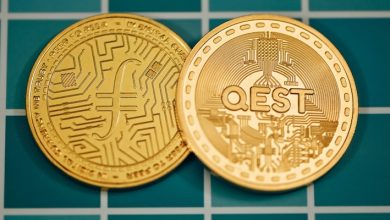How to Analyze the Tokenomics of NFT Projects

- Understanding the basics of tokenomics in NFT projects
- Key factors to consider when evaluating NFT tokenomics
- Analyzing the distribution of tokens in NFT projects
- Evaluating the utility and scarcity of NFT tokens
- Assessing the economic model of NFT projects
- Comparing tokenomics across different NFT projects
Understanding the basics of tokenomics in NFT projects
Tokenomics in NFT projects refers to the economic system that governs the native token of a non-fungible token project. Understanding the basics of tokenomics is crucial for investors and enthusiasts alike. Tokenomics typically includes the token’s distribution, utility, supply, and demand factors.
One key aspect of tokenomics is the token distribution. This refers to how the tokens are allocated, whether through a presale, public sale, or mining process. The distribution can impact the token’s value and scarcity, so it’s important to analyze how the tokens are being distributed.
Another important factor to consider is the utility of the token. This refers to the purpose the token serves within the NFT ecosystem. Tokens can have various utilities such as governance rights, staking rewards, or access to exclusive features. Understanding the utility of the token can help assess its long-term value.
Supply and demand dynamics also play a crucial role in tokenomics. The total token supply and the rate at which new tokens are minted can impact the token’s scarcity and value. Additionally, factors such as market demand and trading volume can influence the token’s price.
By understanding the basics of tokenomics in NFT projects, investors can make more informed decisions when evaluating potential investment opportunities. It’s essential to consider the token distribution, utility, supply, and demand factors when analyzing the tokenomics of an NFT project.
Key factors to consider when evaluating NFT tokenomics
When evaluating the tokenomics of NFT projects, there are several key factors to consider that can help you make an informed decision. These factors include the rarity of the NFT, the utility of the token, the governance structure, and the overall supply and demand dynamics.
One important factor to consider is the rarity of the NFT. The more scarce an NFT is, the more valuable it is likely to be. This is because scarcity drives demand, and when there are fewer tokens available, collectors are willing to pay more to acquire them.
Another crucial factor to evaluate is the utility of the token. Does the token have any real-world use cases, or is it simply a collectible? Tokens that have utility beyond just being a digital asset are generally more valuable in the long run.
The governance structure of the project is also an important consideration. Who has control over the development and direction of the project? Are token holders able to vote on important decisions, or is power concentrated in the hands of a few individuals? A transparent and decentralized governance structure is typically preferred by investors.
Finally, it’s essential to consider the overall supply and demand dynamics of the project. Is there a limited supply of tokens, or can more be minted over time? What is the current demand for the token, and is it likely to increase in the future? Understanding these dynamics can help you gauge the potential long-term value of the NFT project.
In conclusion, evaluating the tokenomics of NFT projects requires a thorough analysis of factors such as rarity, utility, governance, and supply and demand dynamics. By considering these key factors, you can make a more informed decision about whether to invest in a particular NFT project.
Analyzing the distribution of tokens in NFT projects
Analyzing the distribution of tokens in NFT projects is a crucial step in understanding the tokenomics of a project. By examining how tokens are distributed among various stakeholders, investors can gain insight into the potential value of the tokens and the overall sustainability of the project. One way to analyze token distribution is to look at the distribution of tokens among different wallets. This can provide valuable information about the level of decentralization of the project and the potential for centralization risks.
Another important factor to consider when analyzing token distribution is the allocation of tokens to different use cases. Tokens that are allocated for specific purposes, such as governance or staking, may have different value propositions than tokens that are simply used for transactional purposes. Understanding how tokens are allocated can help investors assess the potential utility of the tokens and the long-term viability of the project.
In addition to looking at token distribution among wallets and use cases, investors should also consider the distribution of tokens among team members and advisors. Projects that allocate a large percentage of tokens to team members may face challenges related to token dumping and centralization of power. On the other hand, projects that distribute tokens more evenly among stakeholders may be better positioned for long-term success.
Overall, analyzing the distribution of tokens in NFT projects is a critical step in evaluating the tokenomics of a project. By examining how tokens are distributed among various stakeholders, investors can gain valuable insights into the potential value and sustainability of the project.
Evaluating the utility and scarcity of NFT tokens
When evaluating the utility and scarcity of NFT tokens, it is crucial to consider various factors that can impact their value in the market. One of the key aspects to analyze is the uniqueness of the digital asset. The more scarce and exclusive an NFT token is, the higher its potential value. Additionally, the utility of the token plays a significant role in determining its worth. NFT tokens that offer tangible benefits or access to exclusive content are likely to be more sought after by collectors and investors.
Another factor to consider when evaluating NFT tokens is the demand for the underlying asset or project. Tokens associated with popular artists, brands, or events are more likely to attract a larger audience, increasing their value over time. It is essential to research the market trends and sentiment surrounding a particular NFT project to gauge its potential for long-term success.
Furthermore, the scarcity of NFT tokens can also be influenced by the supply available in the market. Projects with a limited number of tokens or exclusive editions are generally more valuable than those with a larger supply. Understanding the tokenomics of an NFT project, including the distribution model and token issuance schedule, can provide valuable insights into its scarcity and potential for appreciation in value.
In conclusion, evaluating the utility and scarcity of NFT tokens is essential for making informed investment decisions in the digital asset space. By considering factors such as uniqueness, demand, and supply, investors can better understand the value proposition of a particular NFT project and its potential for long-term growth. It is crucial to conduct thorough research and analysis before investing in NFT tokens to mitigate risks and maximize returns in this emerging market.
Assessing the economic model of NFT projects
When assessing the economic model of NFT projects, it is crucial to consider various factors that can impact their sustainability and profitability. One key aspect to analyze is the token distribution mechanism, which determines how tokens are allocated and circulated within the project ecosystem. Understanding the tokenomics of NFT projects involves evaluating the supply and demand dynamics of the tokens, as well as the incentives for users to buy, hold, and trade them.
Another important aspect to consider is the utility of the tokens within the project ecosystem. Tokens that serve a clear purpose, such as providing access to exclusive content or governance rights, are more likely to retain their value and attract users. Additionally, the scarcity of the tokens can also play a role in driving demand and creating value for holders.
It is also essential to assess the revenue model of NFT projects, including how they generate income and sustain their operations. Projects that have multiple revenue streams, such as transaction fees, royalties, and partnerships, are more likely to be financially viable in the long run. Furthermore, analyzing the team behind the project and their track record can provide insights into their ability to execute the economic model effectively.
Comparing tokenomics across different NFT projects
When comparing the tokenomics of various NFT projects, it is essential to look at several key factors to determine their value and potential for growth. One crucial aspect to consider is the total supply of tokens issued by the project. A higher total supply can lead to dilution of value, while a lower total supply may indicate scarcity and potential for increased demand.
Another important factor to analyze is the distribution of tokens among holders. Projects that have a more equitable distribution of tokens may be less prone to manipulation or centralization of power. On the other hand, projects with a disproportionate distribution of tokens could lead to governance issues and conflicts of interest.
Furthermore, it is crucial to evaluate the utility of the tokens within each NFT project. Tokens that serve a clear purpose, such as governance rights, access to exclusive content, or staking rewards, may hold more value than tokens with limited utility. Additionally, the project’s roadmap and future plans for token utility should also be taken into consideration when comparing tokenomics.
In addition to these factors, it is essential to analyze the tokenomics of NFT projects in the context of the broader market trends and industry standards. By comparing tokenomics across different projects, investors can gain valuable insights into the potential risks and rewards associated with each investment opportunity. Ultimately, a thorough analysis of tokenomics can help investors make informed decisions and maximize their returns in the NFT space.



